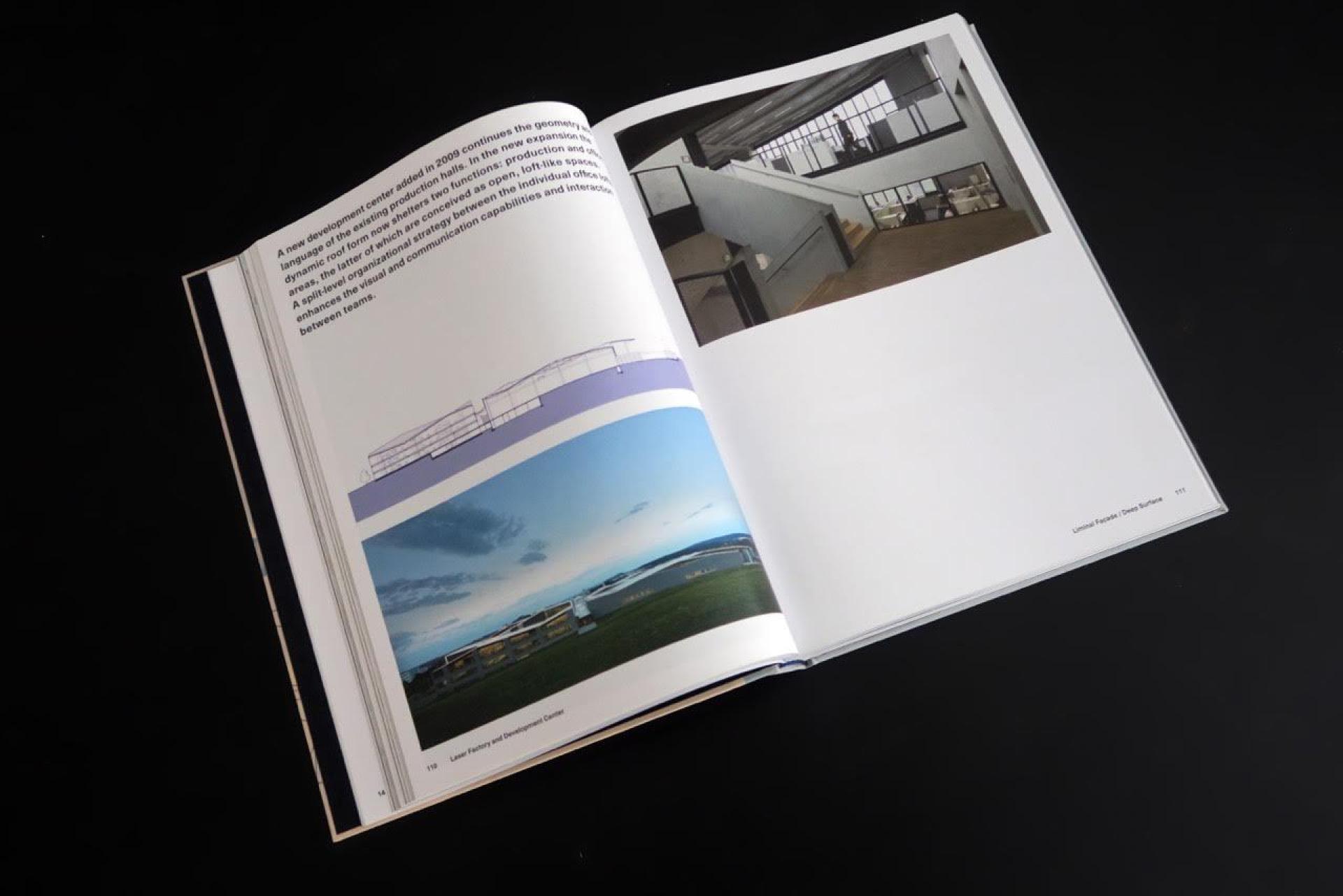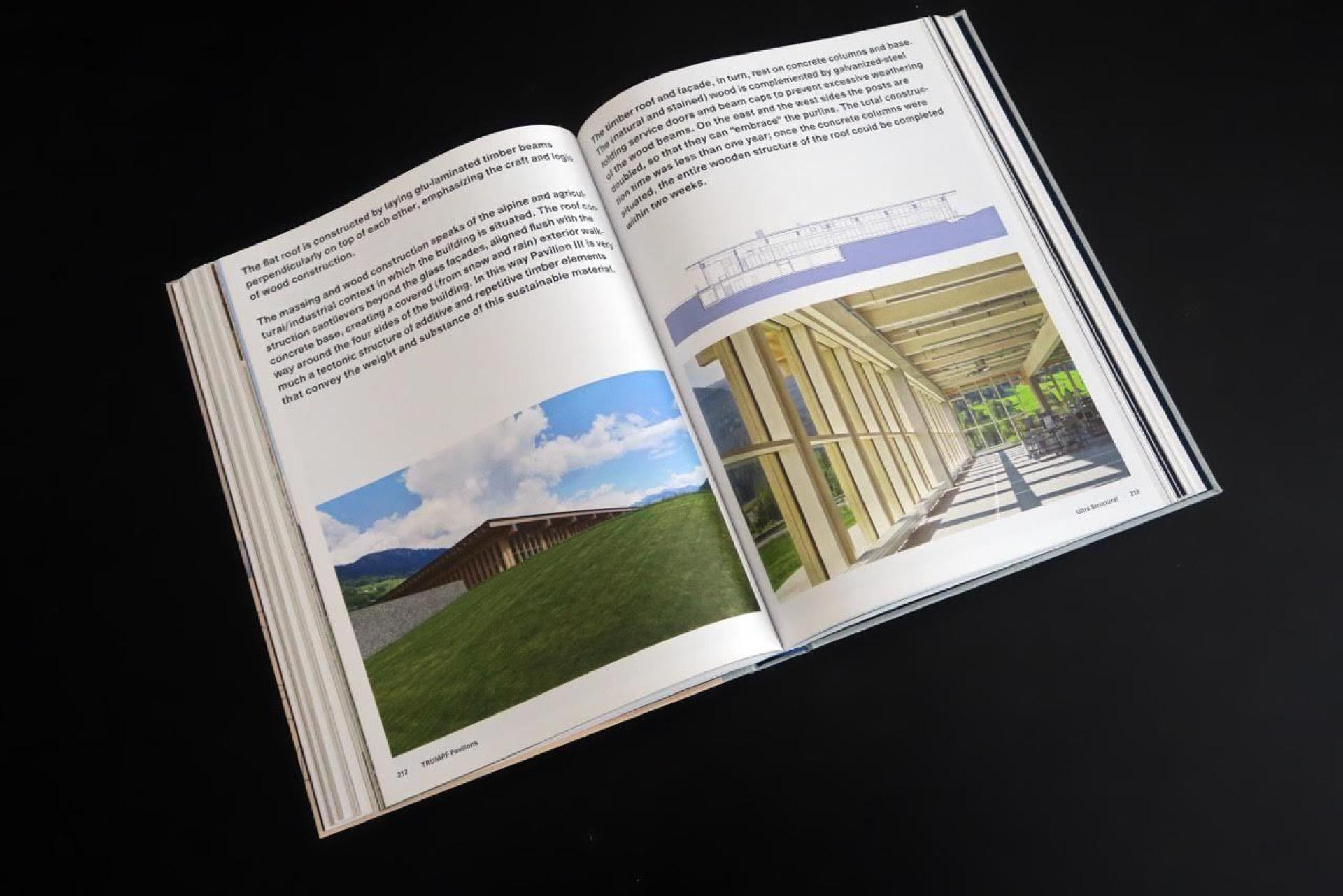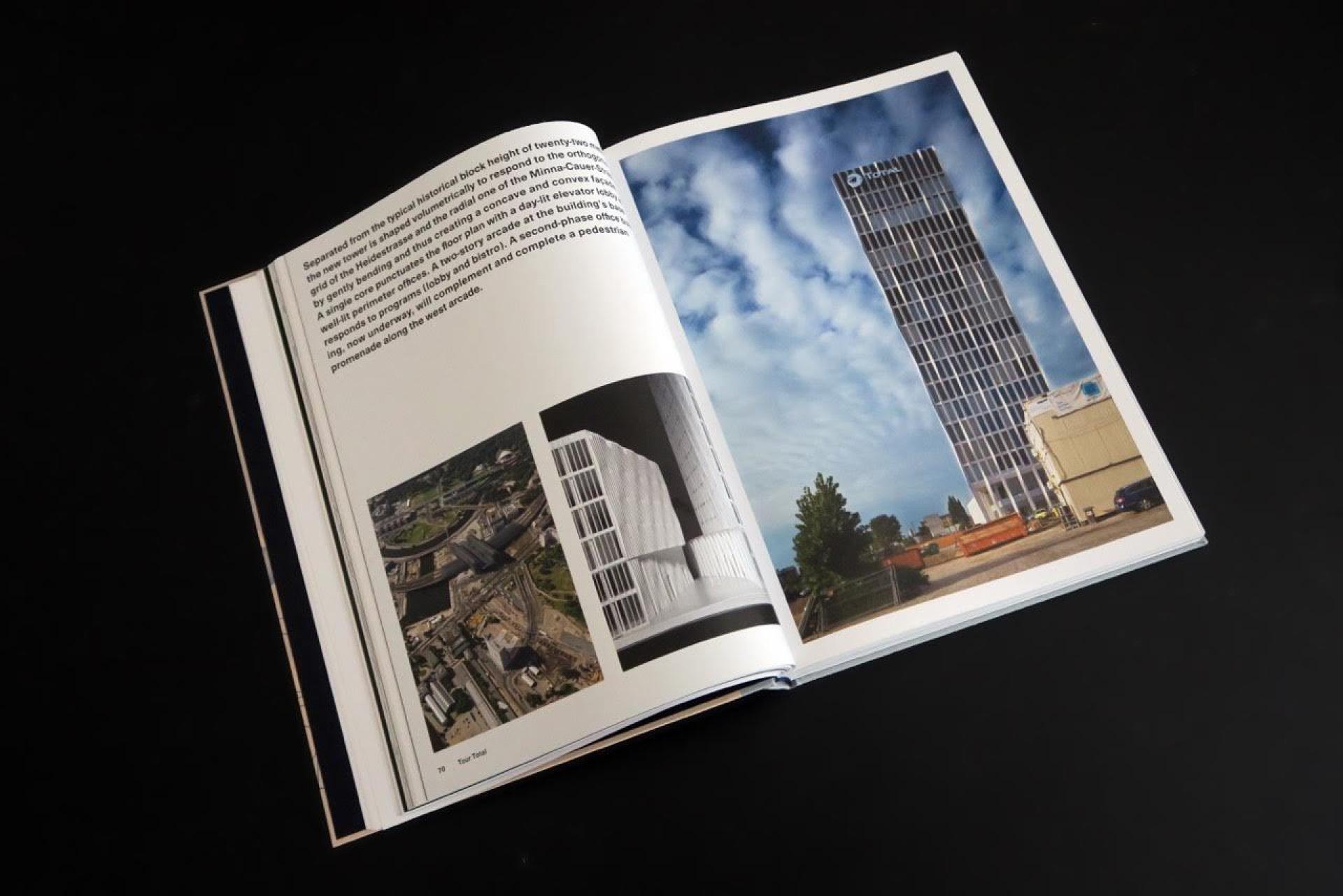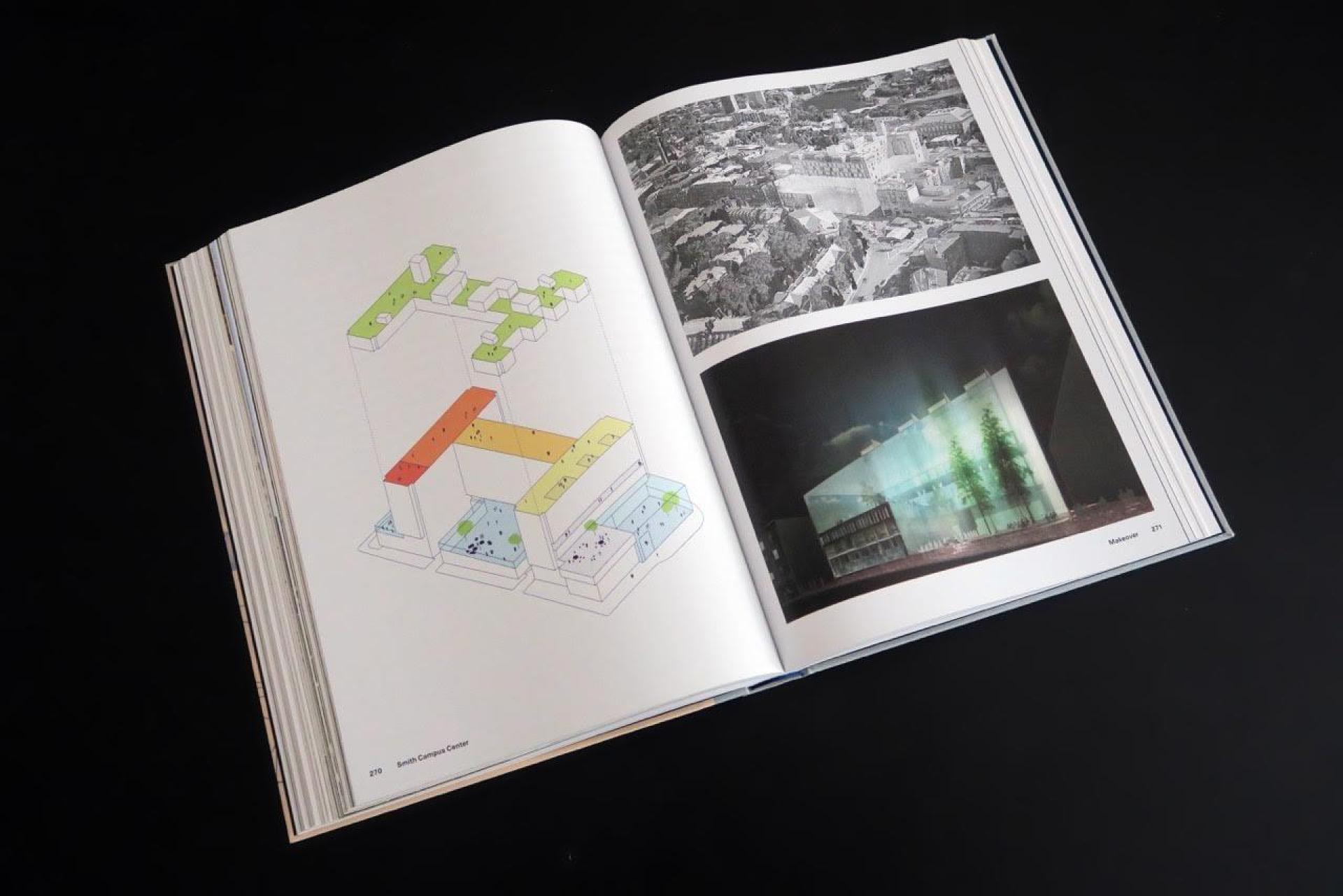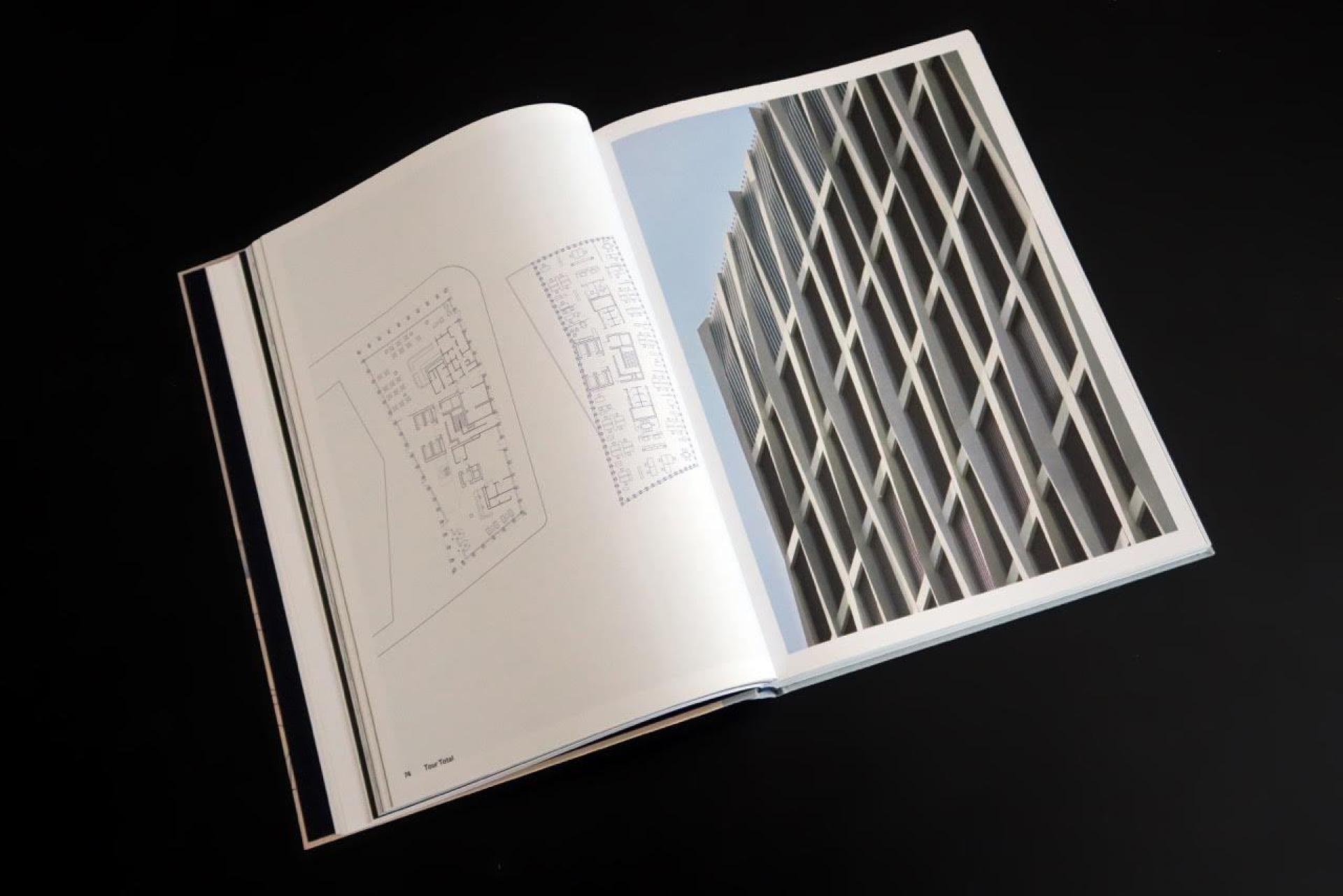Barkow Leibinger: No Prophets At Home
Barkow Leibinger: Spielraum. Foreword by Carson Chan, texts by Hal Foster, Brett Steele, Sarah Whiting, photo essay by Iwan Baan, Hatje Cantz, 2014.
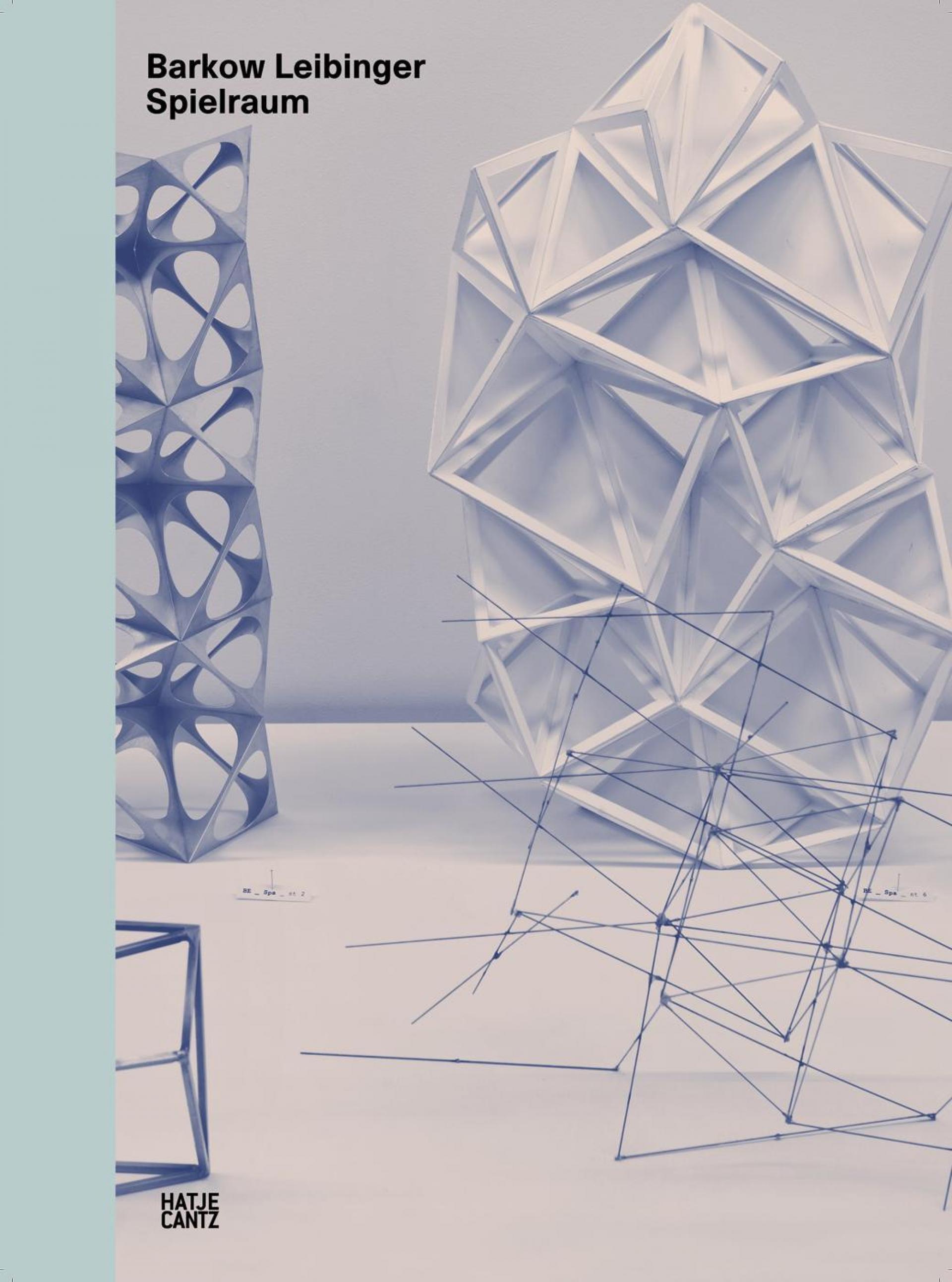
The saddest fact about Berlin is neither that winter may last more than six months nor that public transport is becoming impossible to use due to never ending building works; no, it is that architecture had no “droit de cité” in the new German Capital. Investors, not too few politicians and part of the public opinion love simple-minded, sometimes banal and pseudo-historical urban planning and architecture. Therefore, a publication on the works of a Berlin based studio like Barkow Leibinger, is like a looking glass of what the city’s architecture could have, but did not become after 1989. Frank Barkow, an American and Regine Leibinger who is German started their practice in Berlin in 1993. Unfortunately, they have not built much in their hometown. Looking at their book “Spielraum” this is regrettable.
Each of Barkow Leibinger’s creations is an experiment on structure and ornament. The appearance of their buildings harks back to a 1970s aesthetic, only that the materials they use are very contemporary and incredibly well researched. There is a touch of Buckminster Fuller or Frei Otto in how they design. Their architecture is minimal with a soft touch for computerised high-tech, a point that Hal Foster perfectly addresses in his introduction to the book. But their research is never decorative and their relationship with computer generated geometric shapes never formalist. Their high-tech is not a genre or a style, it is deeply rooted in the reality of the world of construction and engineering. This very probably also due to the fact that they make architecture where nobody else does: on hangars, logistics centers, factories or campus restaurants.
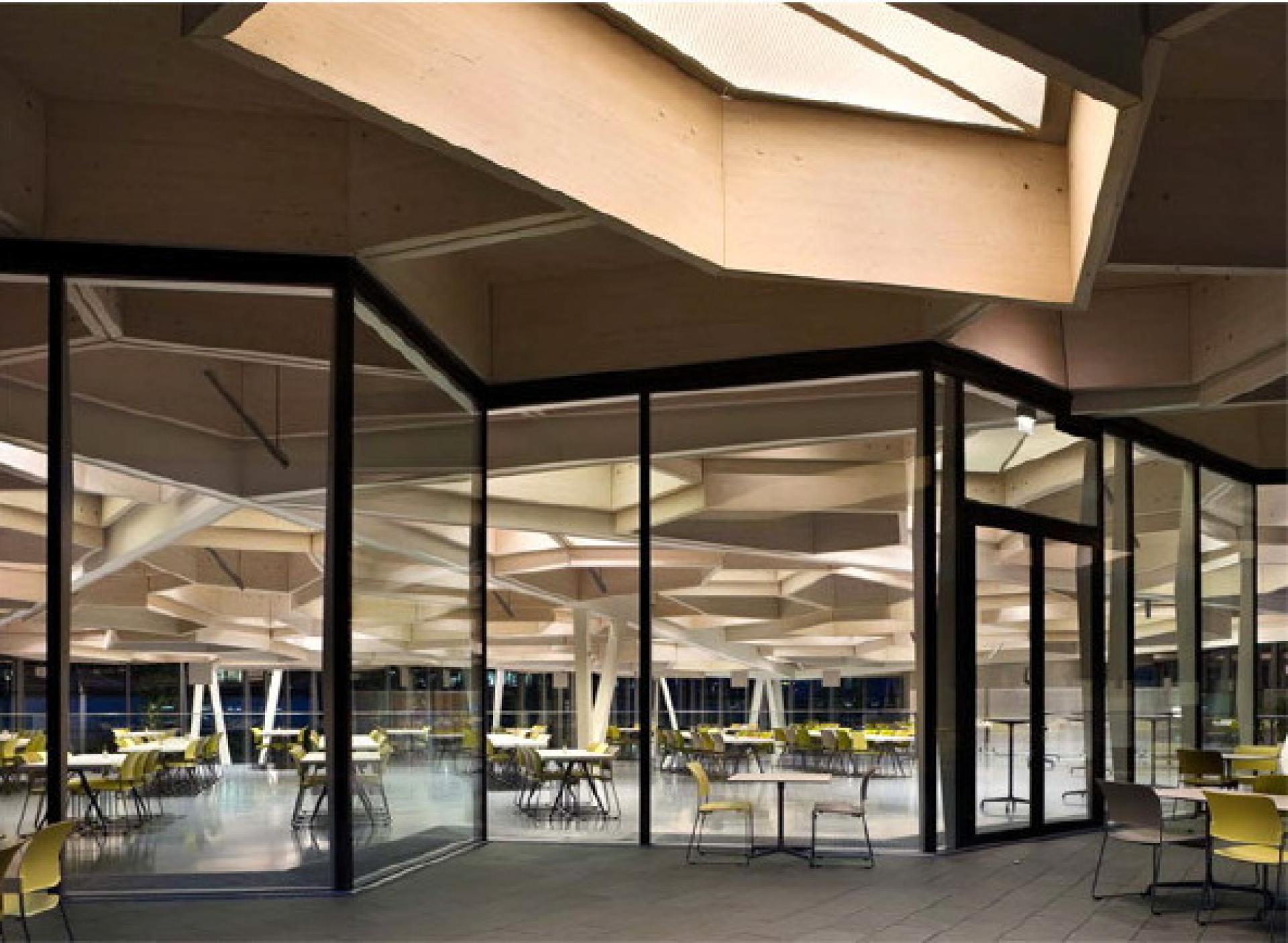
Trumpf Group, restaurant for employees at the company headquarters (Ditzingen, 2008).
When you arrive in Berlin by train, there is a tower right across the Hauptbahnhof in Berlin that functions as a landmark: The Tour Total (2012). It has a discreet presence, a simple white shape reminiscent of the “classical” skyscrapers of the second half of the 20th century; but when you approach it, it reveals elements of precast concrete which generate its geometric pattern. The building is very graphic. It changes quickly depending on our viewpoint and the shadows cast by the sun. In a nutshell: the building is elegant. Something tragic is happening there at the moment. The tower which has long stood there as a solitaire is now becoming surrounded by contemporary architecture of the sort that Berlin is getting “filled with” presently. This creates a powerful contrast between what I would like to call good architecture and boring buildings.
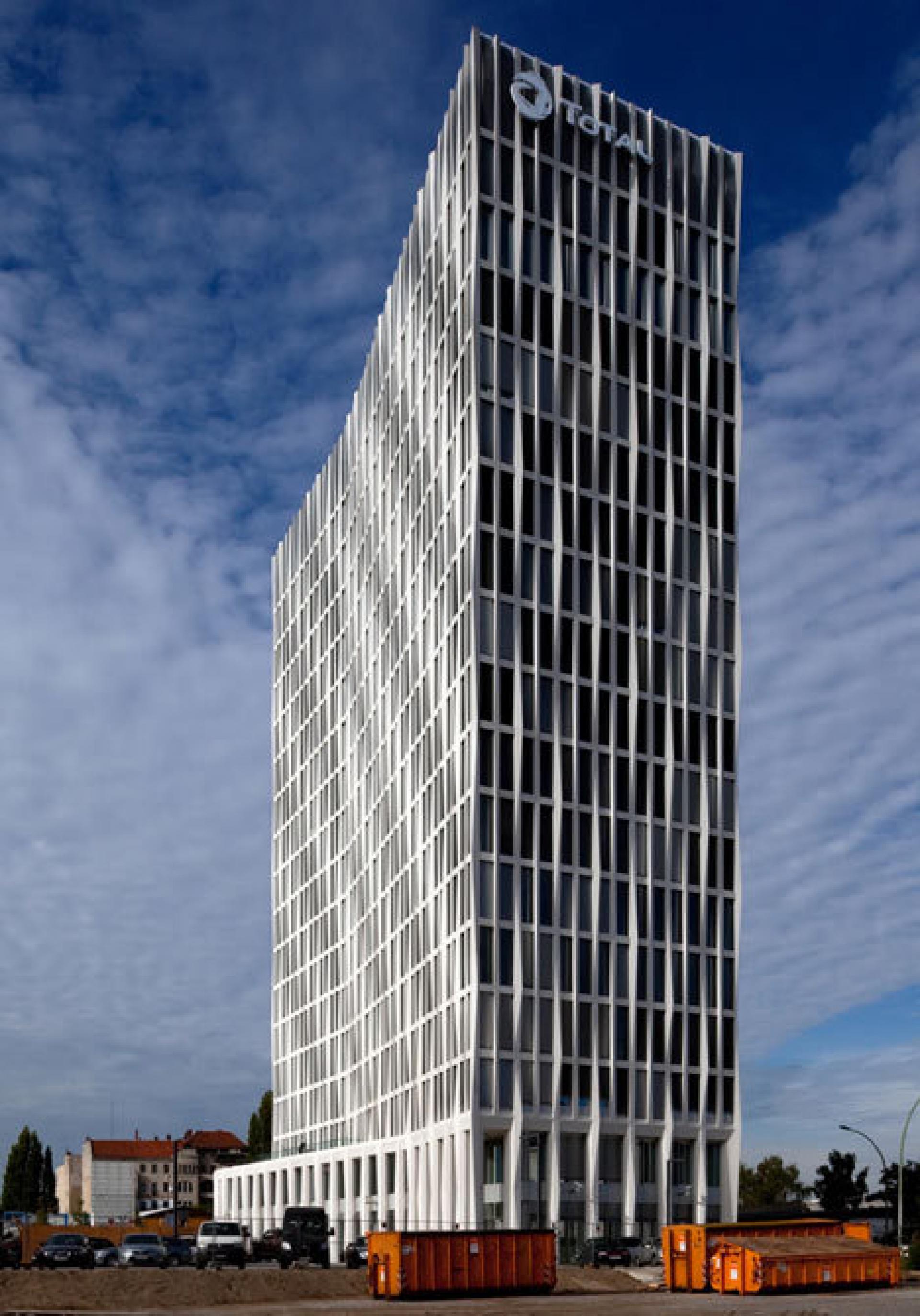
Tour Total (Berlin, 2012).
The architecture of Barkow Leibinger is not based on the repetition of a few fads or tricks. Each of their works is the expression of its use and you can always distinguish an understanding for the “sense of the place”. This publication is a very good synopsis of their creations even if the book’s graphic design is too reminiscent of a portfolio presentation for my taste.
After having read this book, I have only one hope: that Berlin will recognize the talent of their own flock and let the office of Barkow Leibinger express their craftsmanship more often “at home”.
Barkow Leibinger: Spielraum; foreword by Carson Chan, texts by Hal Foster, Brett Steele, Sarah Whiting, photo essay by Iwan Baan, graphic design by Zak Group. German, English. 426 pages, 395 illustrations, 22.60 x 30.60 cm, hardcover, 2014. Hatje Cantz
